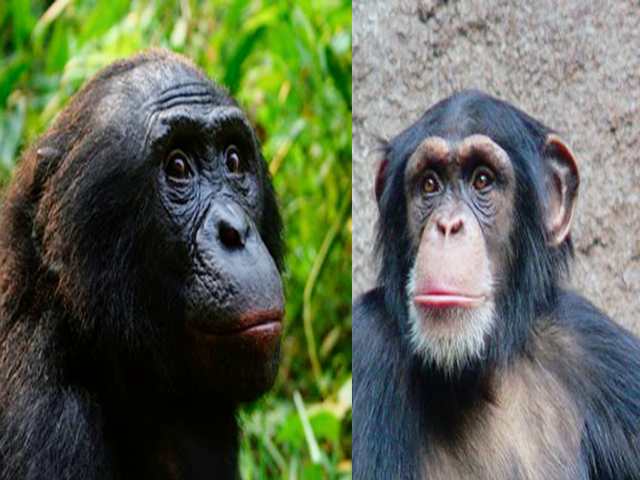Exploring the Genius Minds of Chimps and Their Cognitive Marvels
In the realm of our closest living relatives, Chimps take the spotlight, comprising two distinct species: the common chimpanzee (Pan troglodytes) and the bonobo (Pan paniscus), often referred to as the “pygmy chimpanzee.” Despite minimal differences in size, both species share a close evolutionary kinship with humans, diverging from a common ancestor less than two million years ago.
Residing in the tropical jungles of Africa, these chimpanzee species, while sharing similar environments and dietary habits, exhibit strikingly different behaviors. Common chimps showcase heightened aggression, contrasting with the bonobos’ reputation for frequent sexual interactions and a more pacifist demeanor. Additionally, common chimps demonstrate a greater inclination toward using simple tools for extracting hard-to-reach food.
Delving into the question of whether these behavioral distinctions mirror differences in intelligence, a recent study, detailed in PLoS ONE, undertook a comprehensive analysis. Rather than tackling the ambiguous query of “which species is more intelligent,” the researchers devised tasks to assess various facets of intelligence in both species. The study, conducted on orphaned chimpanzees raised in ape sanctuaries, aimed to evaluate their problem-solving skills and cognitive abilities.
Testing spatial awareness, counting, and communication skills revealed that both species performed comparably, achieving correct responses approximately two-thirds of the time. However, the most challenging task involved opening a container with complex mechanisms to access food. Notably, the females from both species exhibited greater success than their male counterparts.
When it came to using clues to find hidden food or employing tools for obtaining it, common chimps outshone bonobos. Tool use, considered a hallmark of human intelligence, showcased the former species’ proficiency in tasks associated with the physical world.
Yet, human intelligence extends beyond tool use, encompassing social awareness and the ability to understand the minds of others. In these realms, the bonobos excelled, particularly in tasks gauging attention and intentionality. For instance, the bonobos demonstrated a higher success rate in grasping concepts where food was hidden beneath one of two cups, with the aid of a second human providing subtle cues.
Ultimately, the study suggests that the basic intelligence of both chimpanzee species is akin, but their divergent behaviors and skills underscore unique evolutionary paths. Common chimps exhibit prowess in physical tasks and understanding the tangible world, reminiscent of our own problem-solving abilities.
In contrast, the more peaceful and socially adept bonobos excel in tests related to social awareness and empathetic understanding—a testament to the diverse ways in which intelligence manifests across our closest relatives, offering glimpses into the parallel evolution that has shaped our species’ ascent to dominance on Earth.

